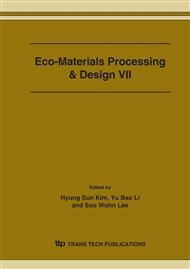p.314
p.318
p.322
p.326
p.330
p.334
p.338
p.342
p.346
Optimization of Sheet Metal Process Parameters of a Shield Case Piece Using Computer Simulation
Abstract:
Numerical simulations based on Finite Element Analysis (FEA) are widely used to predict and evaluate the forming parameters before performing the physical processes. In the sheet metal industry, there are basically two types of FE programs: the inverse (one-step) programs and the incremental programs. In the present paper, the forming process of the shield case piece (LTA260W1-L05) was optimized by performing simulations with both types of software. The main analyzed parameter was the blankholding force while the rest of the parameters were kept constant. The criteria used to determine the optimum value was based on the Forming Limit Diagram (FLD), fracture and wrinkling of the material, thickness distribution, and the principal strains obtained. It was found that the holding force during the forming process deeply affects the results, and a range of values was established in which the process is assumed to give a good quality piece.
Info:
Periodical:
Pages:
330-333
Citation:
Online since:
March 2006
Authors:
Price:
Сopyright:
© 2006 Trans Tech Publications Ltd. All Rights Reserved
Share:
Citation:


